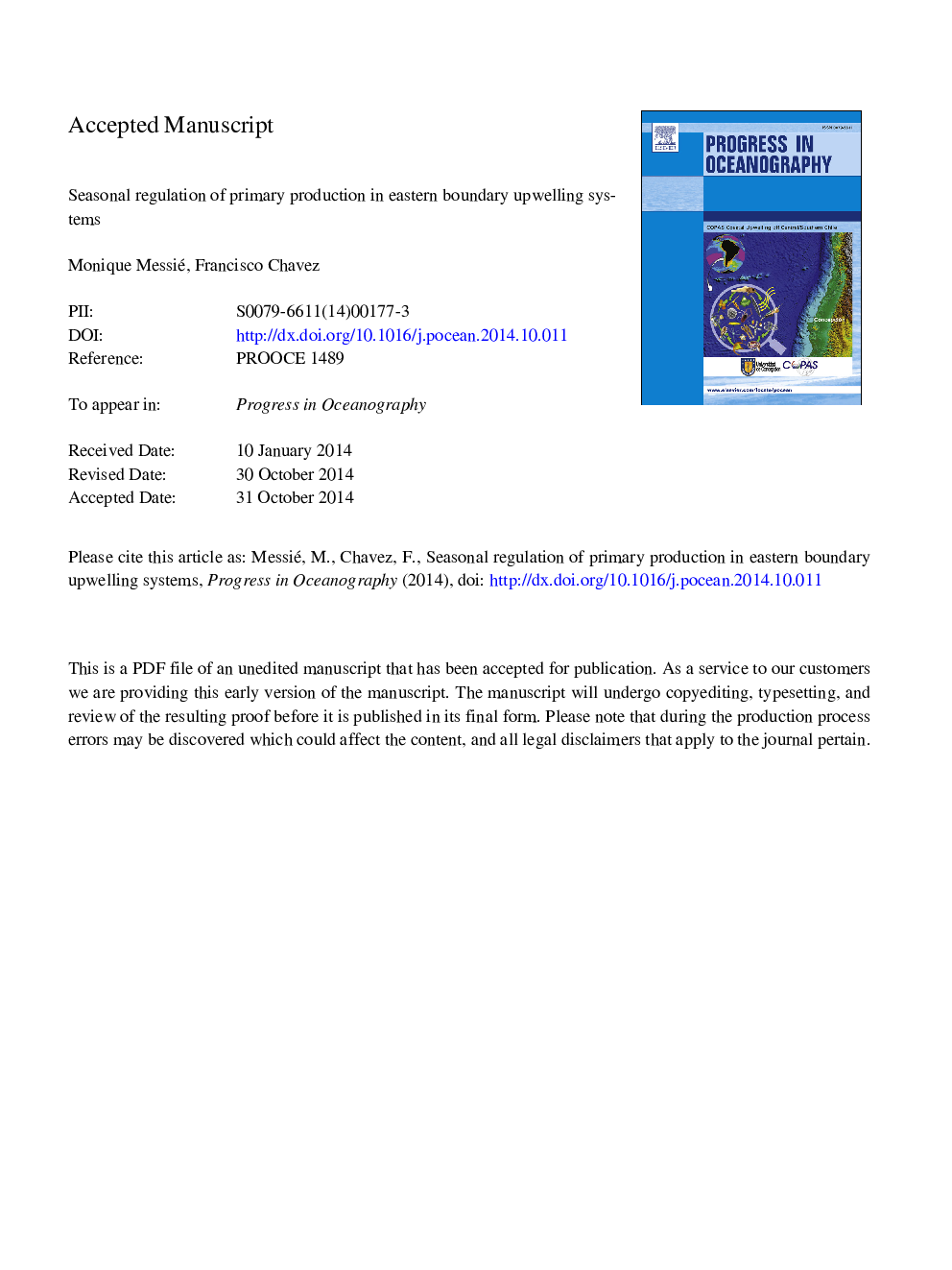| Article ID | Journal | Published Year | Pages | File Type |
|---|---|---|---|---|
| 6388567 | Progress in Oceanography | 2015 | 56 Pages |
Abstract
The regulation of seasonal satellite-derived primary production (PP) was investigated within a 150Â km coastal box in four eastern boundary upwelling systems (EBUS): California, Peru, Northwest Africa and Benguela. The following regulating factors were considered: (1) wind-driven nitrate supply; (2) iron supply inferred from proxies (shelf mud belt width, modeled atmospheric iron deposition, river discharge); (3) temperature; (4) light and (5) physical export consisting of offshore export, eddy-driven and wind-driven subduction. The ratio of potential new production (carbon-equivalent of nitrate supply) to primary production, termed the N-ratio, is shown to be an indicator of PP limitation by nitrate supply (low N-ratios) vs. inhibition by other factors (high N-ratios). The factors regulating PP were assessed by analyzing the N-ratios and computing spatial correlations between PP and each factor each month. The regulation of primary production was found to vary spatially, seasonally and from one EBUS to another. Macronutrient supply is shown to be the dominant regulating factor off Northwest Africa and during some seasons and locations in other systems. Light regulation within the mixed layer occurs in all EBUS in winter but may only inhibit PP (high N-ratios) off Peru and Benguela. Evidence for iron limitation was found in each EBUS (except Northwest Africa) at varying levels and was greatest off Peru during austral winter when iron demand by phytoplankton increases due to low light levels. Rapid offshore advection combined with wind-driven and/or eddy-driven subduction may inhibit PP off California. A simple generalization regarding the regulation of primary production in EBUS is not forthcoming.
Related Topics
Physical Sciences and Engineering
Earth and Planetary Sciences
Geology
Authors
Monique Messié, Francisco P. Chavez,
